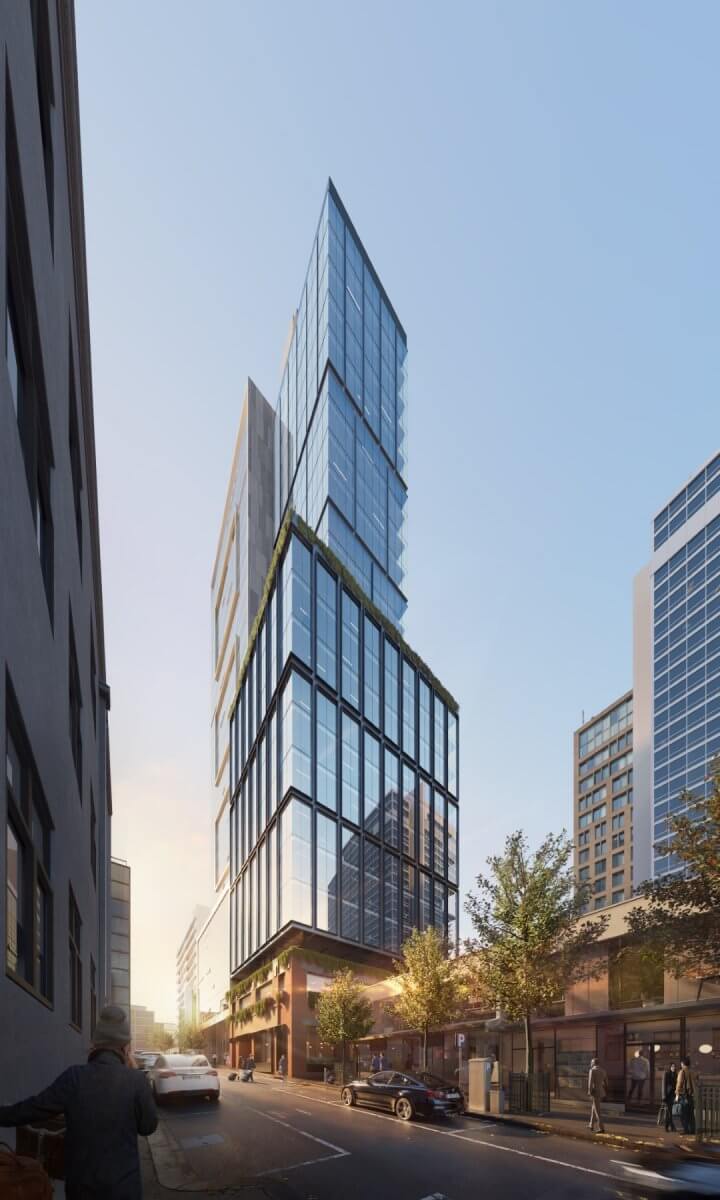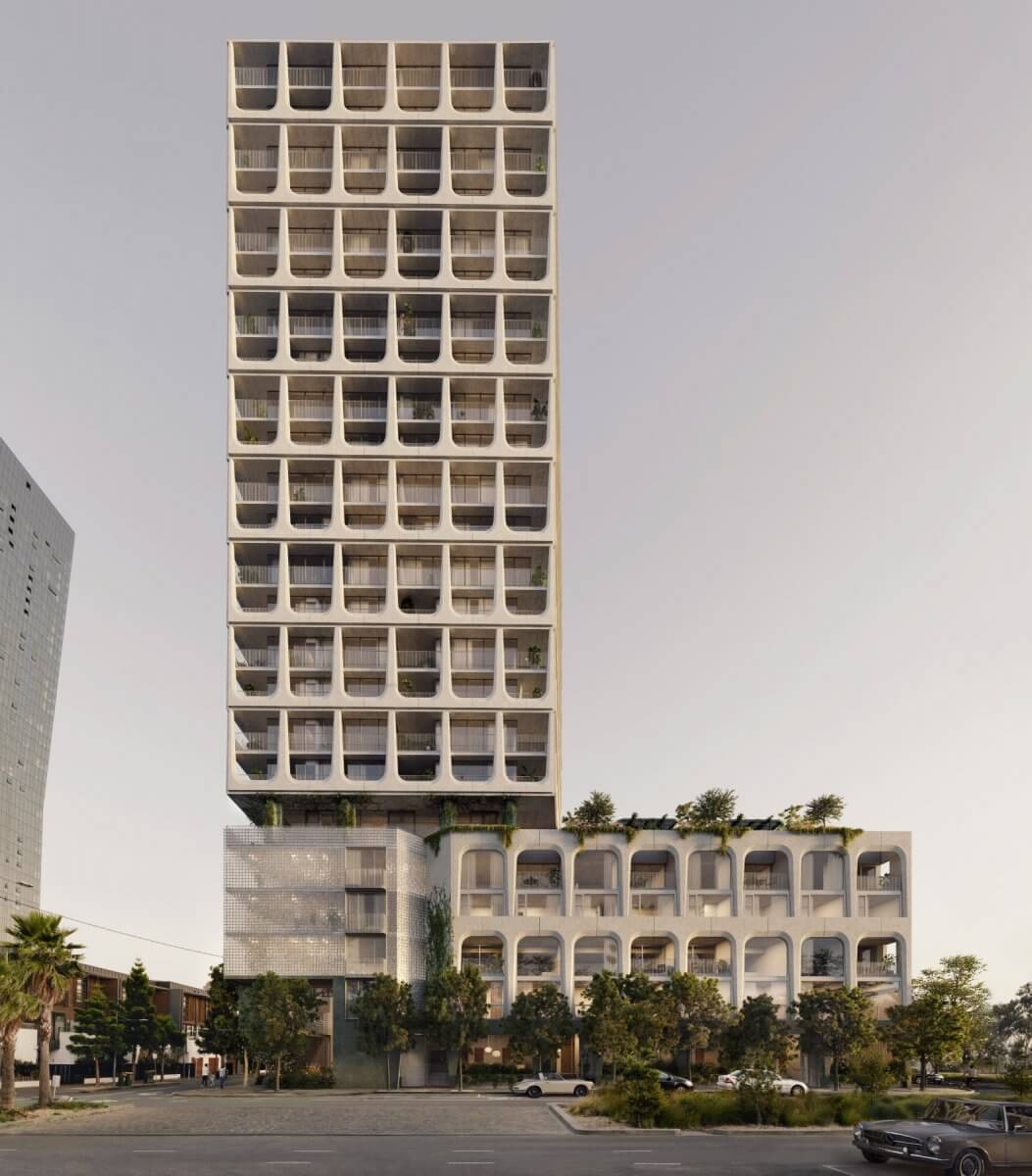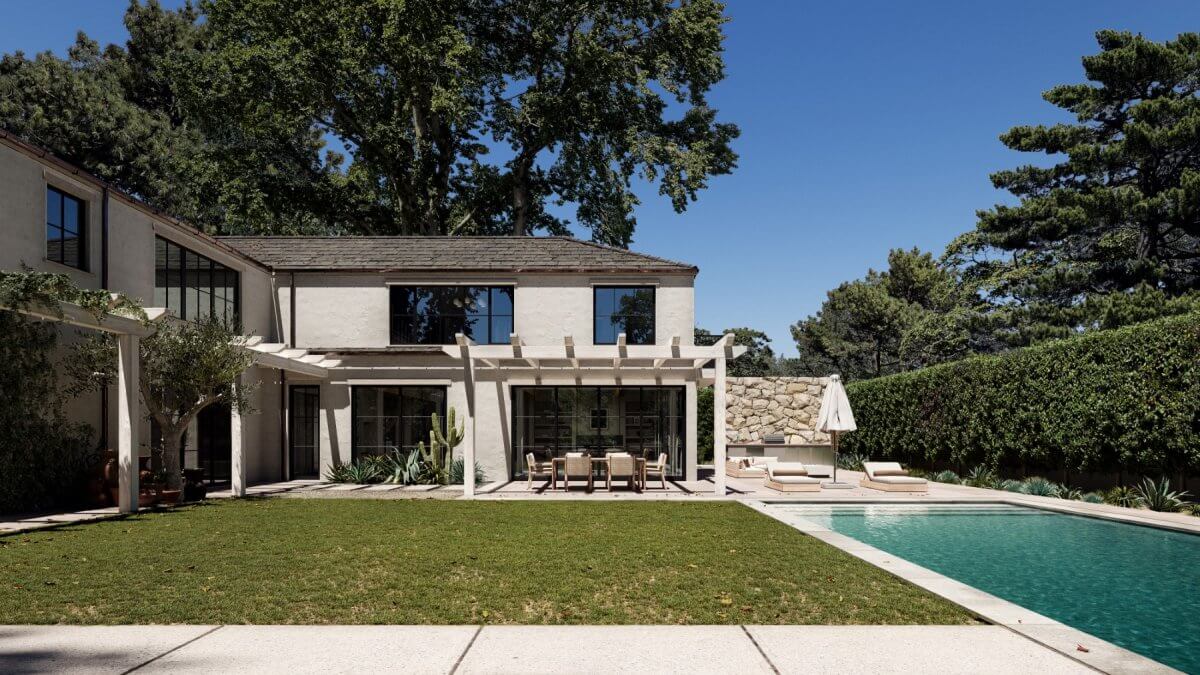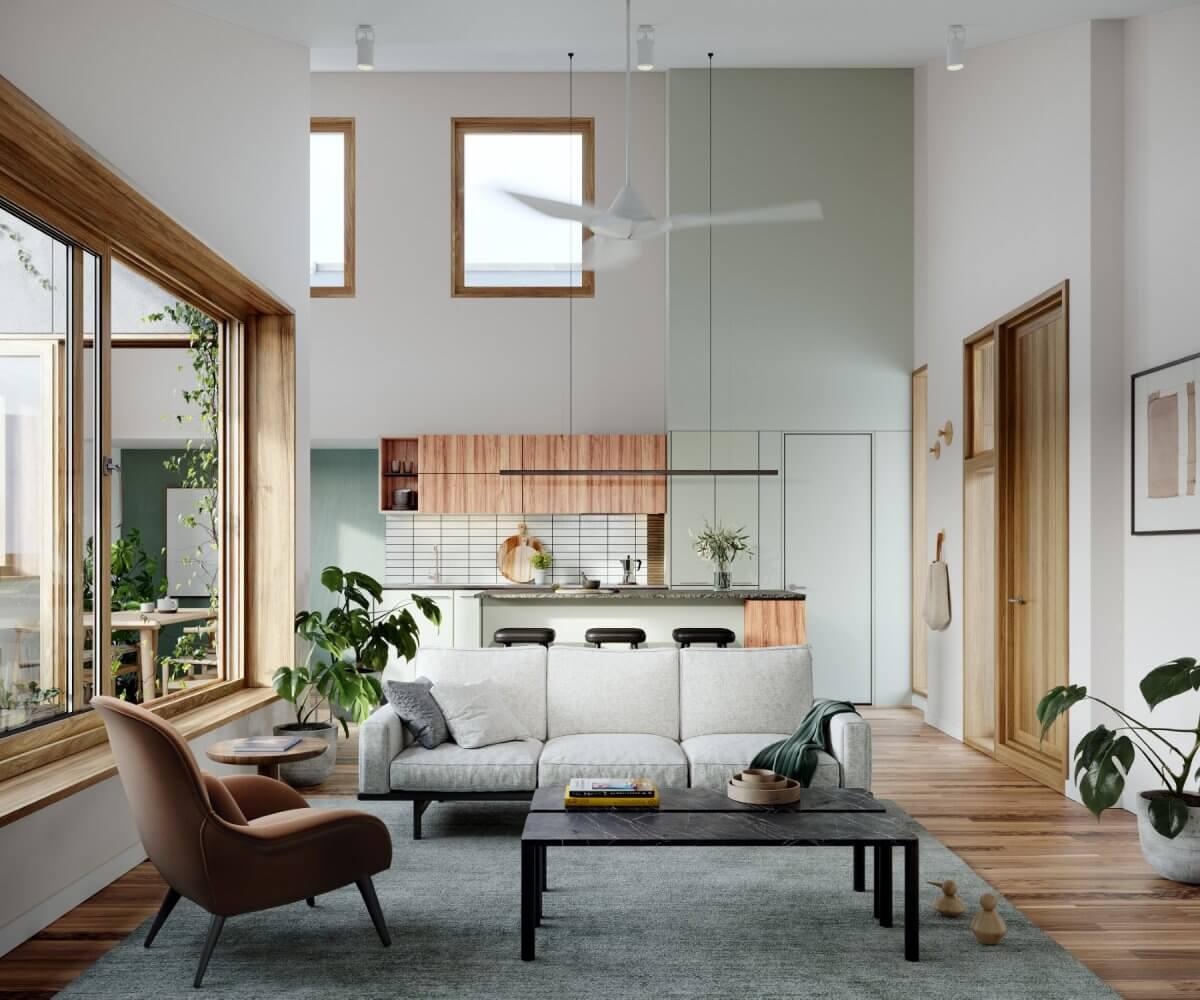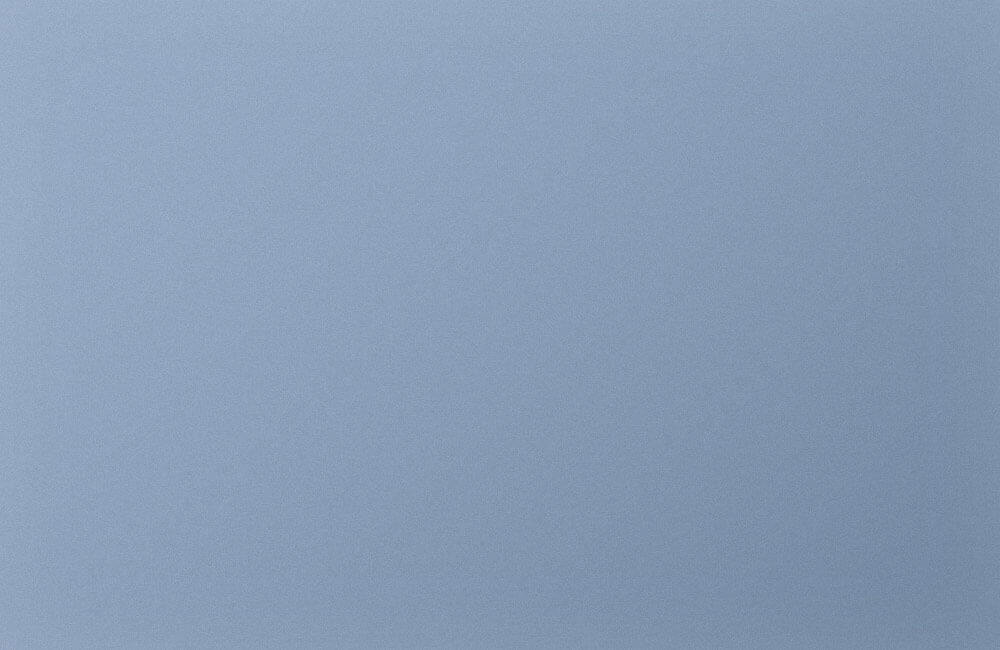“It’s kind of a Ukrainian mania – we want to leave Ukraine to build a brighter future in another country, maybe in Canada or Australia”.
Bogdan Behmat doesn’t sound like a manic person. But then again, he’s a different kind of Ukrainian – after working in Australia for years, he decided to return to Ukraine and build a brighter future at home.
This is how the art studio began. Starting out as just two people, the team grew into dozens. As the self-description on the studio’s website says,
“We’re artists, architects, problem solvers, and superheroes”.
And they call themselves CUUB.
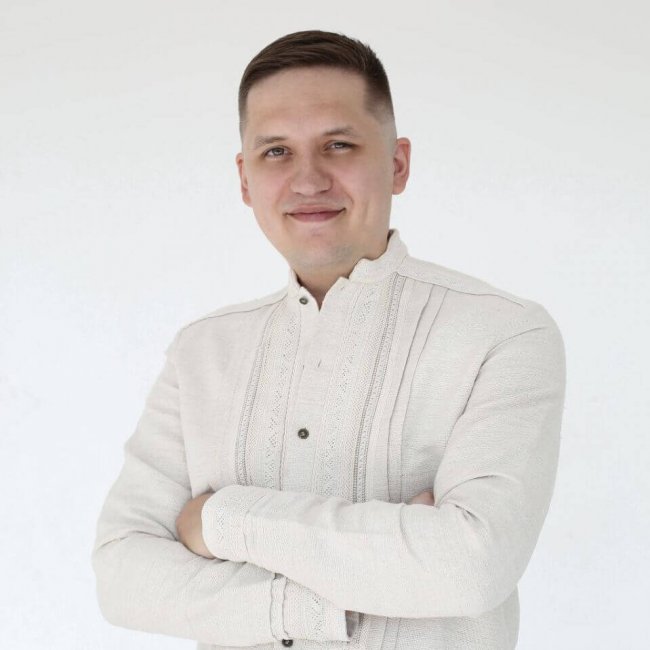
Despite seemingly having every minute of his life dedicated to work, Bogdan agreed to have a chat with us and answer some questions.
How did you come up with the name CUUB?
Bogdan: We picked it because it was simple, it was visual, and we did the research to make sure that no one was using a similar name.
And just a month later a church appeared in America that was named “CUUB”.
I suppose they don’t compete with you.
Bogdan: If we talk about creating images and ideas, I’d say that churches are quite successful competitors!
A 24-storey office project is created by HAMPTON PROJECTS in partnership with the legendary DKO Architects
Why did you decide to work with architectural visualization? How did you decide that this was your niche?
Bogdan: I thought about it just today, remembering how I got there. I was getting my education at the Academy of Civil Engineering and Architecture, and I met a friend who was an architect. She needed to make some projects that she was hand-drawing. I took a look at what she was doing, did some research and found out that there are programs, there’s software that help to do it faster, and I learned how to use those programs in order to help her. And I liked it so much, I decided that the things I was doing before were completely worthless and not interesting, and I’d rather study visualization, architecture, etc. From that moment my life’s direction changed, and I never questioned if this was the right niche or not, because it was interesting, it took all of my time, and I never considered doing anything different.
So it’s just your thing.
Bogdan: It’s my thing.
How did it all work out – creating a studio in Ukraine, getting started, finding customers? What was the hardest part?
Bogdan: We had a good start because, first of all, I had a serious background in this area, and I didn’t lose any time when I lived in Australia. I made some acquaintances with architects, with designers, and they were my first clients. So the ten years I’ve spent working in the field helped a lot.
Another thing is that we worked for the foreign market, which always has certain benefits.
When I returned to Ukraine and started working here, there were just two of us, and we worked without advertisement, without experience of running our own business, without any coaches and so on. We just did our work well, and people learned about us thanks to word of mouth. In two and a half years we had about ten people in the team, and a large client base. It’s been growing and improving since then.
We started working exclusively with the Australian market. In Australia housing is rather expensive, which in turn leads to higher demand for high quality architectural images – much higher demand than in Ukraine. In the five years of our work, we had just two… maybe three customers from Ukraine. Currently about 80% of our base are Australian clients, and 20% are worldwide – Europe, America, etc.
Frankly, I don’t think architectural visualization is something that Ukraine desperately needs right now – perhaps after our victory…
And the hardest part – that was probably the staffing. This was something that slowed down our growth. We started out in Dnipro city, and there were very few people who were looking for work in a studio and who met our needs.
The first staff we found came from work.ua – the pool is rather large there, and we sifted the candidates, picked the most perspective ones, and they learned on the fly, with my part being teaching them the necessary skills. That’s how we started.
Symphony 303 is a brass band. Here the violin sounds softly with morning light streaming through snorkel window and wrapping around curved wall, the fully open door to the living room and the balcony space fill with the tenderness of the harp, established trees and established trees and the scent of flowers play with the grace of the piano
How do you manage to solve the staffing problem nowadays?
Bogdan: The 3D artists are still a problem… we look for people with medium and upper medium skills, and we train them to become top tier artists. We plan to create a real academy, where we would be able to teach our own students, and the bonus for the best students would be working with us.
It became somewhat easier once we established ourselves, became a team with a recognized name, with a lot of Instagram followers and such. There are talented artists who know us, and are eager to work with us.
Let’s talk about your superheroic activities a little. Are you more like the Avengers or the Justice League? What’s your superpower?
Bogdan: If there’s a superhero that does a lot of dirty work and stays unseen, that’s probably us! We’re similar that way to people who work in hotels, no one ever sees them but the impact is significant. For a long time, we stayed in the shadows, no one saw us in Ukraine, we worked only with the Australian market, where we also stayed almost invisible. No one knew what it cost us to finish our projects for them. I guess our superpower is the ability to do tons of hard work and never give up.
How does your team hold together?
Bogdan: Of course, sometimes there are problems, we live in the real world. With some people, it became clear that they are not part of our team in the first 2-3 months, for various reasons, so they quit. After someone stays with us for a year, it usually means that they are going to stick with us. I guess it’s normal. People are different, we have our own approach, our own core that we’ve formed, with our rules of communication. So we’re looking for those who fit in with us.
All in all, we’ve got a friendly air in our team. No reason for complaints! As far as I know =)
Which projects are the most interesting to work on?
Bogdan: Those with no strict product requirements, I guess. On the whole, it depends on who you work with and the type of project. In our line of work, we deal either with the architects or with the developers. And as to the projects – those mainly can be architectural competitions or market projects. In the former, the architect wants to represent their building as well as possible, create an interesting atmosphere, make it eye-catching. Market projects, on the other hand, are specifically aimed at selling.
They’re more technical, more detailed, and perhaps less interesting. When you work with competitions and architects, usually it means that for five days you’re falling out of your life, you work nights, because the deadlines defy the imagination, and you finish with bloodshot eyes, but the result is worth it. It’s nice to look at such images afterward.
Fenders Katsalidis have created a bright and inviting contemporary workspace. The expressive architectural solutions make it one of the most recognizable and memorable commercial buildings
Have you seen what happens after you finish your projects, how the buildings look in real life?
Bogdan: We see them all the time. During my time in Melbourne, when I went out for a jog in the morning, I often saw either my renders or actual construction.
There are some companies that analyze the market, and make videos about modern architecture that’s being built in Australia, and we’ve already seen well-made, high quality videos of buildings based on the projects that we had made, many of these projects win prestige awards after they’re built, so yeah, we see them, it’s always nice to know that you didn’t just finish your work and put it on a shelf, but that your projects keep on living afterwards.
And did it happen that when you see the result, you think “Oh, that’s not how it should be at all – why didn’t they ask me?”
Bogdan: Shame on us, but usually it’s rather the opposite – why didn’t we make our images as beautiful as it looks now when it’s built! Maybe it’s too much self-criticism. We try to emulate reality in our programs, and it’s a complex technical problem, it’s not always possible to solve it perfectly.
To implement the project, MAB Corporation invited the legendary architect Freedman White to cooperate, who helped create a fundamentally new vision of living space
About working for Australian market – how do local companies interact with you?
Bogdan: You see, the market is very large there, and there’s quite a lot of companies. I can tell you a story to illustrate it… we participated in a conference about half a year ago. And among the people who were invited there was my former employer. Despite the fact that we are competitors now, we had a great discussion about our business, market, personal life. So it’s rather friendly relationship. Yes, we’re sharing the same market, but we understand that we push this market up together, we’re trying to create the best images possible, to attract more money to the market, and the better we work, the more rewarding the market will be, and the more each of us can earn. So from what I know – healthy competition on the AU market.
Have you got an idea of a “dream project”? Something that you would really like to work on?
Bogdan: Almost every visualizer has a dream to work with some of the top architecture agencies, like Foster&Partners or Zaha Hadid and so on. Frankly, I was interested in something like this, too. But now… Don’t get me wrong I still wouldn’t mind taking on this kind of projects, it would be challenging to manage and so on. But now, for me personally, something interesting can be found in any kind of work, really. Even if you’re visualizing an outhouse, you can always pick some interesting detail and develop it into a theme, perhaps one that the customer won’t even notice, but you’ll know that it’s there. Creative work is like that.
Now you’re a large studio, you have a reputation, you have a team… what’s the hardest thing in your work today?
Bogdan: The hardest thing is to keep the quality on the level that we’ve declared at the start. As far as I know this problem hits every studio in our field sooner or later. Once you start growing, adding new team members, it’s become harder to balance things out. But if you looking for an answer eventually you will find the solution.
The eight-story office building will be equipped with 1,182 solar panels that will produce more energy than it consumes
We’ve been living in troublesome times these last years. There was russian invasion, then coronoviral pandemic, then russian invasion again… how did it influence your work?
Bogdan: We started working in 2017. At that time, the russian aggression that had begun in 2014 went stale enough that it didn’t really affect us. Then the coronavirus began, and we thought those were hard times – weren’t we naïve! Obviously, we took a lot of measures to protect ourselves. After a couple of months it became clear that the monster was not as horrible as we imagined it, and in two more months we pretty much returned to the normal mode of work. Of course, we did the testing, we organized quarantines, and it worked well enough.
And after the pandemics… although it wasn’t over when full-scale war with russian federation began. And that, of course, had a much heavier impact on us. Our main office was located in Dnipro city, and Dnipro was caught between three fires – there were chances of being attacked from the north, from the east, and from the south. It was very stressful. After waking up on 24th of February, by 7.30 we were already in the office, having a conference, thinking of what we should do. Can’t say was it because of our genius precognition, or extreme luck, but about a month before the open war began we opened the second office in Lviv. So we had this spare platform where we could evacuate more or less sefly.
Now the work has normalized, as much as it is possible. About half of our team still works remotely, waiting for the reopening of our main office. Not everyone wanted or was able to leave. The Lviv office works in normal mode. It’s hard to stay at home this time. When there’s such a flow of information, people have to distract themselves somehow, and I suppose it’s easier while working, in the company of other people.
Did any russian clients approach you, offering work?
Bogdan: That happened… it’s not a pleasant topic, but I’ll be honest. We had one russian customer before the war, one I was not even aware of. So we worked on a project until open war began. And in the morning of 24th they wrote us, saying “So what, is everything still on, our Zoom meeting at 14:00, as agreed?” You can imagine what we suggested them to do…
After we refused to work with them, they wanted at least to take some project files. We sent them the account number of the “Back and Alive” – Ukraine volunteer organization, told them “Send the money you owe us for this project to this account, and no problem, take your files”.
We also had some people, freelance workers who time to time helped us with workload. There were people from russian federation among the freelancers… we cleared out the loyal putinists immediately. There also were those who were like “Yeah, Ukraine is good, russia is bad”, and we finished the projects that we started with those people, and then removed them from our team. Currently, we don’t have any contact with russians.
Are there people who work in visualization whose works make you think “Wow, that’s impressive! That’s good work! I wish I could do that…”
Bogdan: Oh, there are dozens! But they’re all our competitors, so I’d rather not advertise them… every day I see works like this, even now, after 12 years of work. We have a practice in our studio – we invite guests from different spheres, photographers, very talented visualizers, and they give us master classes. Just recently, we got acquainted with a top Lviv artist, who gives us such master classes every week or two. And when I look at him, I think “Dear me, where was he all those 12 years?..”
So there’s no limit in learning, there’s always something more to achieve. Every day I see some work that shows me a way to improve my own skills and the skills of people in our studio.
If you could come back to the time when you decided to create your art studio in Ukraine, what kind of advice would you give to yourself, having your current experience?
Bogdan: Probably I’d say “Don’t hesitate, act faster”. Leaving Australia was a very tough decision for me. I was just a boy of 24 when I came to Melbourne, which had been voted the best place for living on the planet for the seventh time. I had never seen anything like this, so when I arrived, I walked around open-mouth with awe, looking at the skyscrapers and so on.
And I could stay there, keep working for the company that hired me, living life I dreamt about, or I could open my own business. Which meant I would have to go back to Ukraine, due to my visa specific. It took me about a year to make this decision. But I made it, I came to Ukraine, and I never regretted.
So this is what I’d probably advise to myself – do it and get on the way.
Looks like this really was a good decision. Thank you for your time and for the talk. I hope we’ll celebrate the sixth year of your studio after our victory.
Bogdan: In our free country.
About the interviewer:
Semen Tsevelev is a journalist from Odesa, Ukraine, who likes to write about art, films, and the issues of modern society.
 Translate
Translate


